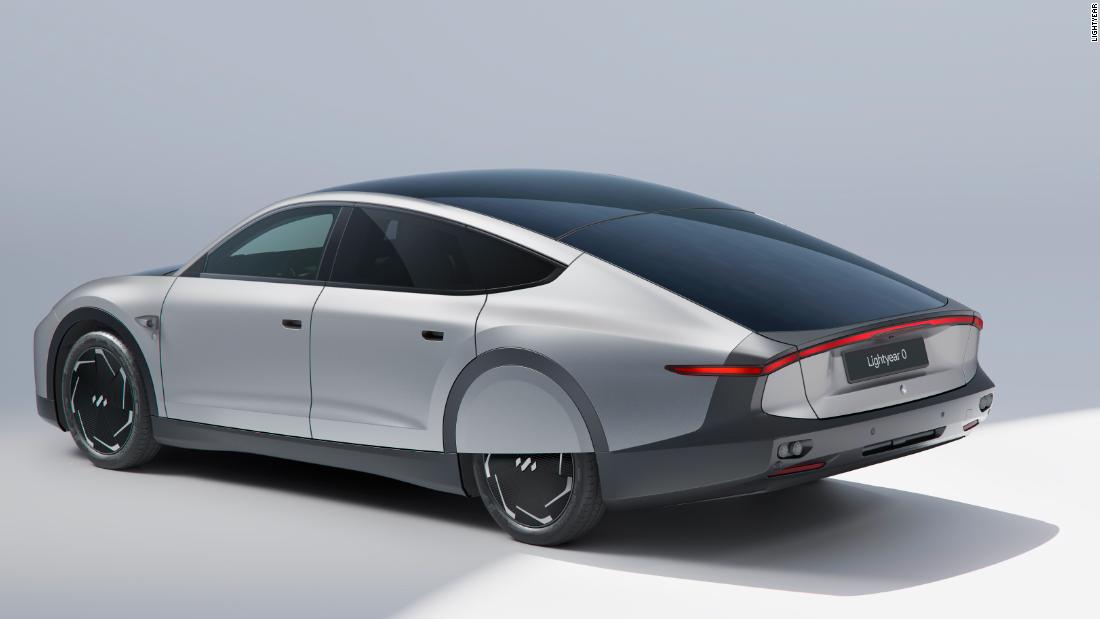
Solar-powered cars use photovoltaic cells to convert sunlight energy into electricity. It can store solar energy in batteries and enables them to run smoothly at night or when there is no direct sunlight. They have gained popularity as people are becoming more interested in renewable and sustainable energy systems. Many automobile companies are working on solar cars, and the technology has the potential to change the future of the automotive industry. According to the research, the global solar-powered car market is expected to grow by 20% between 2019 and 2027.
William G. Cobb of General Motors Corp. (GM) invented "Sunmobile," the worlds first solar-powered automobile, on August 31, 1955, at the General Motors Powerama auto show in Chicago, Illinois. Many renowned companies such as Hyundai, Lightyear, Toyota, Squad Mobility, etc., are leading the way in developing solar-powered cars.
Solar-powered cars: Advantages & Disadvantages:
Cars powered by solar energy are something very unique and make people and companies want to produce more of them. But why they are so special and what makes them distinct?
- Solar energy is inexhaustible and renewable energy that does not cause pollution.
- Solar-powered cars do not require fuel.
- In comparison with petrol and diesel engines, they run faster and more smoothly.
- These cars do not produce noise as compared to others.
- Using solar energy for solar-powered cars reduces the use of fossil fuels (which are limited resources).
- It takes 6 - 8 hours to charge the solar cars from sunlight.
- They are environmentally friendly, sustainable, and contribute to the betterment of society by reducing the threat of carbon emissions.
Its popularity and benefits are widely known, but there are also some downsides to solar-powered cars right now.
- Expensive batteries are required to store solar power so that cars can run at night.
- Cars powered by solar energy require large roof surfaces, with low wind resistance, and can only accommodate two passengers.
- Solar panels are used on rooftop solar cars which are quite expensive.
- Another significant disadvantage is that some areas do not receive enough sunlight. As a result, solar-powered cars are impossible to drive when there is no sun or when the weather is bad.
Difference Between Solar-Powered Cars and Electric Cars:
There is a common misconception that solar cars and electric cars are the same, but they are not. Following are the major differences between these two cars:
- Electric cars are propelled by one or more electric motors instead of internal combustion engines. Solar-powered cars are entirely powered by direct solar energy.
- Electric cars run by electricity which powers the electric motor and generates power by burning a mixture of fuel and gases. Solar cars use photovoltaic cells to convert sunlight into electric energy, which is then used to power all parts of the vehicles propulsion and other functions.
- Electric cars are reliable and require less maintenance, whereas solar cars require heavy-duty maintenance than electric cars.
- Electric cars are sold commercially whereas solar cars are not because of the difficulties it involves when designing an ordinary car into a solar car.
Solar Cars VS Electric Cars: Who Wins?
Solar cars and electric cars have their own perks and both of them are driven worldwide. Many startups are now producing cars powered by solar energy such as Abtera, Sono Motors, etc. Tesla has previously rejected the use of solar panels in its vehicles, claiming that the method is inefficient.
However, it appears that the work of competitors has just persuaded Musk and Teslas engineers. A company called EV Solar Kits is developing a photovoltaic upgrade kit for Tesla vehicles. Musk claims that solar panels will extend the range of the car by 15 miles (24 kilometers) per day.
Future of Solar-Powered Cars:
With the advancement of technology and innovation, people are now witnessing the rise and popularity of renewable energy sources which are solar cars. Since the research on solar energy is still ongoing and always in the early stages, car designers face a challenge in making solar cars look like regular cars. In the future, it will be possible to install solar systems on standard cars.
Conclusion:
Due to its limitations, the majority of solar cars have been designed for races. However, several prototypes are used on public roads. The automotive industry is still in the early stages of producing solar-powered cars. Despite its popularity, not everyone is on board. Some companies think that there is not enough space in cars to store the energy from the sun to completely power that vehicle, whereas some think that it is feasible to store enough energy.
What are your thoughts on solar-powered cars?
Leave a Comment
Related Posts
-
18 May 2022
-
18 May 2022
-
20 May 2022
Sign up for free, explore fun and knowledgeable content, and make your own portfolio!
🟢All System Operational
© 2022 - 2024 Freelancing by Fay.
Design by Limitless Technologies Pakistan - All rights reserved.







0 Comments